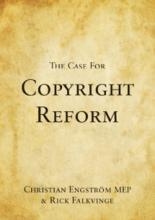The non-partisan Congressional Research Service just released an updated report titled “U.S. Income Distribution and Mobility: Trends and International Comparisons” dated 11/29/12. In it they find that over the past few decades, the rich have gotten a lot richer. In addition, the data they analyzed “suggest that those at the very top have reaped disproportionately larger gains from economic growth.“ In the report’s comparison with other countries, it stated “the U.S. income distribution appears to be among the most unequal of all major industrialized countries and the United States appears to be among the nations experiencing the greatest increases in measures of income dispersion.“
Why do (or should) I care? I have nothing against the wealthy. But… I’m really starting to get pissed with all the nonsense about the “fiscal cliff” and how it’s “ok” to cut benefits & raise taxes on the middle class, but not on the wealthy. Uh… excuse me… but I think most American’s realize that the greatest number of tax breaks (& loopholes) apply, many exclusively, to only the wealthy.
Oh… and all that crap from the GOP that lowering taxes on the wealthy creates more jobs & improves the economy? Uh, well, uh… the CRS released a report in September titled “Taxes and the Economy: An Economic Analysis of the Top Tax Rates Since 1945” which found no correlation between reduced tax rates and increased economic growth over the past 6+ decades. Of course, the GOP didn’t like that & forced the CRS to withdraw the report (see NY Times article “Non-Partisan Tax Report Withdrawn after GOP Protest“). The report states “data suggests the reduction in the top tax rates have had little association with saving, investment, or productivity growth. However, the top tax rate reductions appear to be associated with the increasing concentration of income at the top of the income distribution.”
Ya just gotta love the Republican Party, eh? To heck with woman’s rights, Planned Parenthood, Social Security, Medicare. and even PBS/NPR; and to heck with all the people EXCEPT the rich. I’m embarrassed to even admit that I ever voted Republican!
All I ask is to be taxed fairly. If there are benefits to be granted, then they should be distributed from the bottom up… not from top (most wealthy) down. Maybe it’s time to finally throw out our overly complicated tax system and just switch to a Flat Tax. Things have gotten so ridiculous & our representatives so useless that I’m beginning to believe that only a “Flat Tax” system can save us.
But what the heck do I know?

 Here’s what you see when you first run SyncEXP. I’ve circled “Include sub-folder” as this check-box defaults to unchecked for each task you create. Unless you specifically do not want to synchronize sub-folders, always check this box to synchronize ALL files in the specified task folder.
Here’s what you see when you first run SyncEXP. I’ve circled “Include sub-folder” as this check-box defaults to unchecked for each task you create. Unless you specifically do not want to synchronize sub-folders, always check this box to synchronize ALL files in the specified task folder. For each task you must specify the Host and Mirror folder, followed by setting the six “File synchro options” at the bottom which allow you to specify the file copy, delete or ignore operations. You can either enter the Host & Mirror locations or click on the Browse button; navigate to the desired folder; then click the “OK” button. Double-check the six “File synchro options” carefully for each task, as this is where many user errors occur.
For each task you must specify the Host and Mirror folder, followed by setting the six “File synchro options” at the bottom which allow you to specify the file copy, delete or ignore operations. You can either enter the Host & Mirror locations or click on the Browse button; navigate to the desired folder; then click the “OK” button. Double-check the six “File synchro options” carefully for each task, as this is where many user errors occur.


 The circled “Advanced Options” in the upper right-hand corner of the previous snapshot allows you to include, ignore or delete only specified files or file types. In addition, you can also specify a username & password if your network requires it. The settings shown on the right are what you get if you click on the “Defaults” button in lower left-hand corner. I strongly suggest that you DO NOT check “Auto Mode” as this will eliminate the Preview window and Results dialog. I always check the “Ignore one hour time difference…” because for some reason this seems to occur more often than you would expect between different systems.
The circled “Advanced Options” in the upper right-hand corner of the previous snapshot allows you to include, ignore or delete only specified files or file types. In addition, you can also specify a username & password if your network requires it. The settings shown on the right are what you get if you click on the “Defaults” button in lower left-hand corner. I strongly suggest that you DO NOT check “Auto Mode” as this will eliminate the Preview window and Results dialog. I always check the “Ignore one hour time difference…” because for some reason this seems to occur more often than you would expect between different systems.






 Christian Engstrom and Rick Falkvinge have just released
Christian Engstrom and Rick Falkvinge have just released 